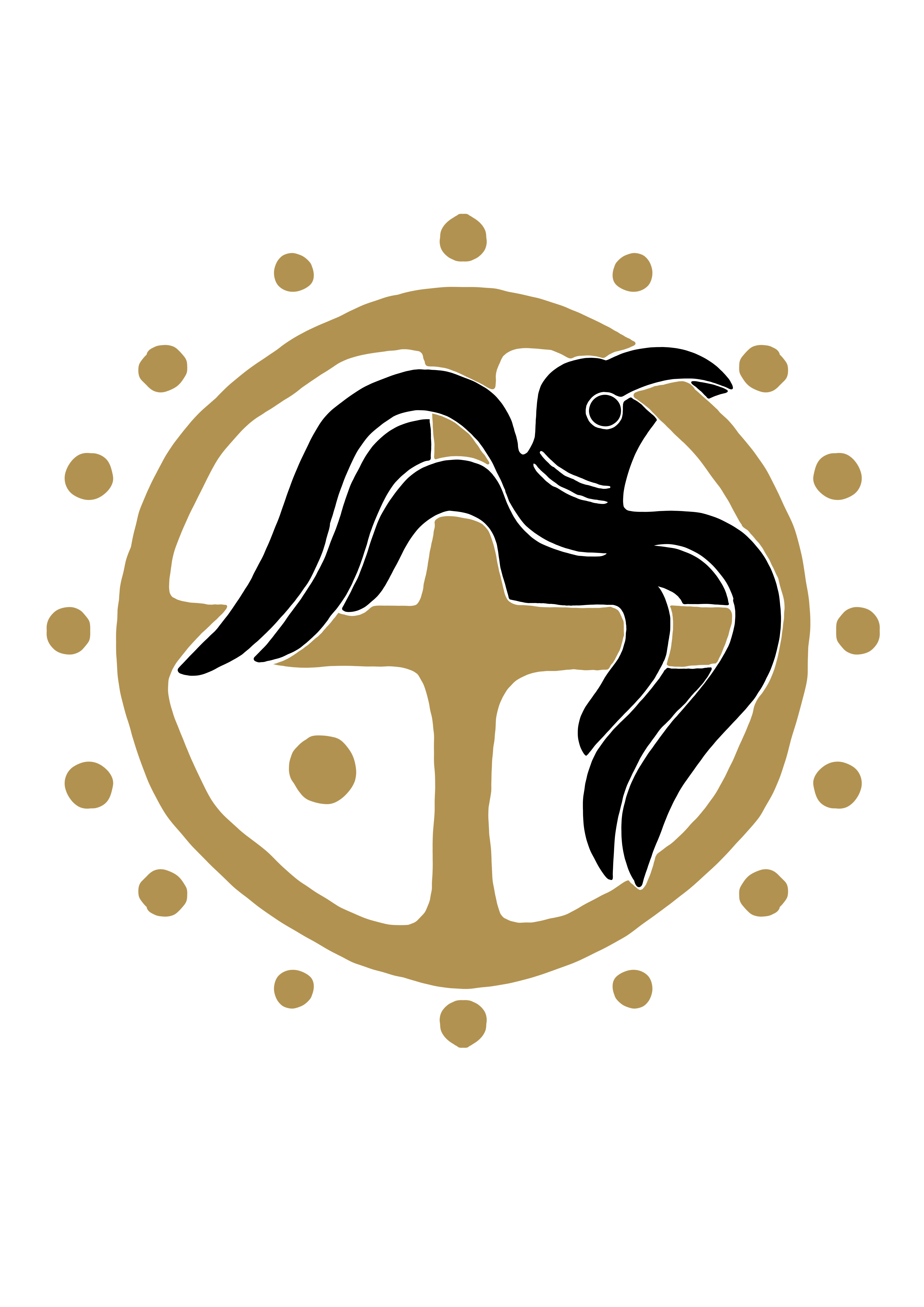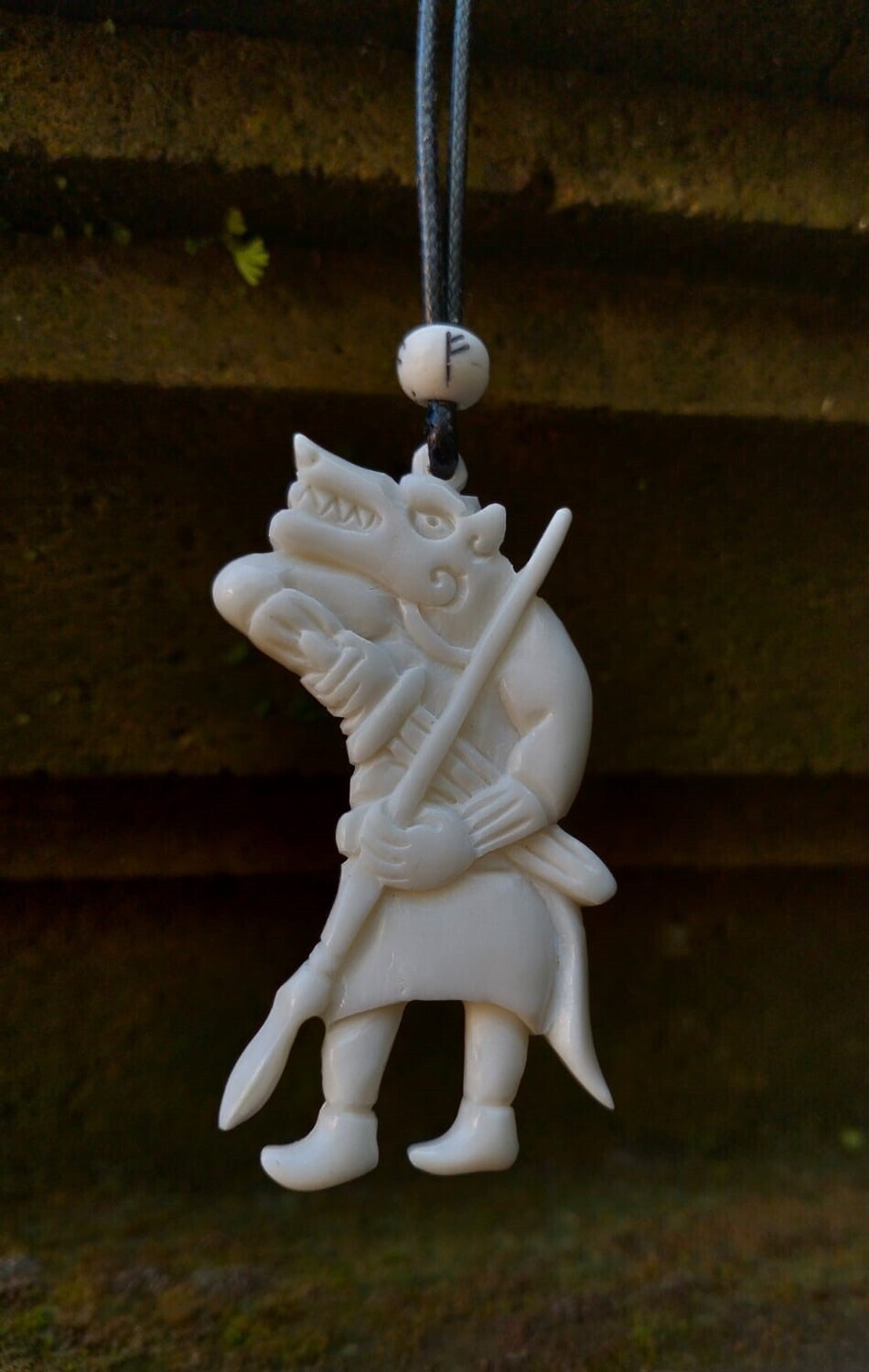Wolf Berserker Ulfheðnar Viking Amulet - Traditional Norse Carvings inspired by Historical Viking age art, Bone Hand-Carved
Dancing God Odin / Alfadir Viking Amulet - Traditional Norse Carvings inspired by Historical Viking age art (Torslunda Plates with weapon dancer).
Allafther depicted in Ritual Helmed, with a sword and holding 2 spears in his hands. Amulet coming with cotton cord and Runic bone bead.
The bone and wood were the most affordable raw materials used to carve and design ornate pieces. A common feature among Viking jewellery were animal designs taken from nature and Norse mythology. Bone jewellery was common among Viking men and women.
Size: 5 - 6 cm / 2.38 inches
The Ulfheðnar, sometimes spelled as "Ulfhednar" or "Úlfhéðnar," were a type of ancient Norse berserker warrior associated with Norse mythology and Viking Age Scandinavia. Here are some historical facts and interesting information about them:
- Meaning of the Name: The term "Ulfheðnar" is Old Norse for "wolf-hides" or "wolf-skins." It is believed that these warriors wore wolf pelts or skins as part of their attire, symbolizing their connection to the wolf and possibly invoking its ferocity and strength.
- Distinctive Characteristics: Ulfheðnar were known for their fierceness and battle frenzy. Like other berserkers, they were said to enter a trance-like state of fury, known as "berserkergang," during combat, where they displayed extraordinary strength, endurance, and fearlessness.
- Association with Odin: In Norse mythology, Ulfheðnar were often associated with Odin, the chief god of the Norse pantheon. It was believed that they dedicated themselves to Odin and emulated his characteristics, particularly his role as a warrior and his association with wolves and ravens.
- Battle Tactics: Ulfheðnar were renowned for their prowess in battle and their ability to strike fear into their enemies. They were often depicted as elite shock troops who charged into the thick of combat with reckless abandon, wielding weapons such as axes, swords, and spears.
- Spiritual Practices: It's suggested that Ulfheðnar may have undergone rituals or spiritual practices to invoke their berserker state. These could include chants, drumming, or consuming hallucinogenic substances to induce altered states of consciousness.
- Symbolism: The wolf held significant symbolism in Norse culture, representing strength, cunning, and ferocity. By adopting the guise of the wolf, Ulfheðnar may have sought to harness these qualities in battle and intimidate their adversaries.
- Historical Accounts: While there are numerous references to berserkers and Ulfheðnar in Old Norse literature, such as the sagas and the Poetic Edda, it's challenging to separate myth from reality. Scholars debate the extent to which berserkers truly existed as distinct warrior groups or if they were exaggerated figures of legend.
- Legacy: Despite the uncertainty surrounding their historical existence, Ulfheðnar and berserkers have left a lasting impact on popular culture and continue to capture the imagination as iconic figures of Norse mythology and Viking lore. They are frequently depicted in modern literature, art, and media as epitomes of primal fury and martial prowess.
Four Runes were chosen to be carved on a bead:
- Fehu (ᚠ):Fehu represents wealth, abundance, and material possessions. It is associated with prosperity and success in financial matters.
- Tiwaz (ᛏ):Tiwaz symbolizes victory, courage, and leadership. It represents the energy of the warrior and the ability to overcome challenges with honor and integrity.
- Ansuz (ᚨ):Ansuz is the rune of communication, inspiration, and divine wisdom. It signifies the power of the spoken word and the connection to higher realms of knowledge and understanding.
- Thurisaz (ᚦ):Thurisaz represents chaos, conflict, and protection. It is associated with the forces of destruction and transformation, as well as the need to confront challenges with strength and resilience.
These four runes each carry unique meanings and significance within the runic alphabet, offering guidance and insight into various aspects of life and spirituality.
Material: polished cattle bone. No animal has been injured, as moose drop their antlers from late March to mid-April.
The Viking god Odin was the main god of the ancient Scandinavian Norse people. He is referred to as all father (Alfadir) because he was considered the father of the gods. Odin is also referred to as Wotan (Old German) or Woden (Anglo-Saxon). He was the wisest of the Norse gods and was known for seeking knowledge.
____________________________________
* Recommendations for wear and storage: Avoid protracted heat (saunas, baths, direct sunlight), as well as contact with water and household chemicals.

